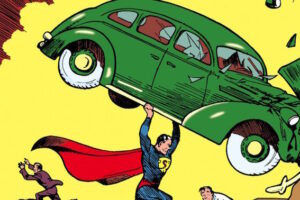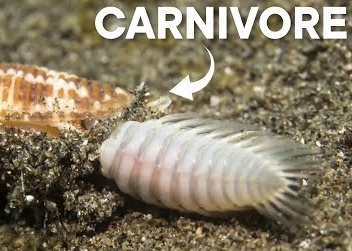10 Classic Silent Horror Films That Still Haunt Us
The horror genre has a rich and captivating history, almost as old as cinema itself. From the earliest days of filmmaking, storytellers have used the medium to terrify audiences, pushing the boundaries of imagination and technical innovation. Whether through clever camera techniques or groundbreaking makeup effects, these films have earned their place in cinematic history for good reason. So, dim the lights, settle in, and prepare to explore ten silent horror films that are sure to send shivers down your spine.
Horror films have always been a fascinating blend of art and fear, tapping into our deepest anxieties and curiosities. The silent era, in particular, was a time of experimentation, where filmmakers relied heavily on visual storytelling to evoke emotions. Without the luxury of sound, they mastered the use of shadows, exaggerated expressions, and eerie atmospheres to create unforgettable moments of dread. These early works laid the foundation for the horror genre as we know it today, influencing countless filmmakers and leaving a lasting legacy.
What makes silent horror films so intriguing is their ability to unsettle without relying on modern special effects or jump scares. Instead, they draw you in with their haunting imagery and slow-building tension. Films like Nosferatu and The Cabinet of Dr. Caligari are prime examples, showcasing how creativity and ingenuity can transcend technological limitations. Watching these classics is like stepping into a time capsule, offering a glimpse into how filmmakers of the past interpreted fear and the unknown.
If you’re a fan of horror or just curious about the roots of the genre, these silent films are a must-watch. They remind us that sometimes, the most effective scares come from simplicity and imagination. So, if you’re ready to dive into the eerie world of early cinema, this list is your perfect guide. Just be prepared—these films might be old, but their ability to chill is timeless.
10.Nosferatu (1922)
When it comes to classic silent horror, vampires are an essential part of the conversation—and Nosferatu (1922) stands as one of the earliest and most iconic takes on the legendary bloodsucker. While many might immediately picture Bela Lugosi’s suave and menacing Count Dracula from the 1931 Universal adaptation, it was actually director F.W. Murnau and actor Max Schreck who first brought vampires to the silver screen nearly a decade earlier. Their creation, Nosferatu, remains a haunting masterpiece that continues to influence filmmakers to this day.
The story behind Nosferatu is almost as intriguing as the film itself. Originally conceived as an adaptation of Bram Stoker’s Dracula, the project hit a major snag when Stoker’s widow, Florence, refused to grant the rights. Undeterred, Murnau and his team decided to tweak the story, changing names and details to create something just different enough to avoid legal trouble. The result? A film that loosely mirrors Dracula but carves out its own unique identity, thanks in large part to Schreck’s unforgettable portrayal of the vampire Count Orlock.
Schreck’s performance is nothing short of chilling. His gaunt, rat-like appearance, combined with the film’s eerie makeup and shadowy cinematography, creates an atmosphere of pure dread. Iconic scenes, like Orlock rising stiffly from his coffin or his elongated shadow creeping up a staircase, have become legendary in the horror genre. These moments are not just scary—they’re artfully crafted, proving that fear can be evoked through simplicity and creativity.
Despite Florence Stoker’s efforts to sue the filmmakers and destroy every copy of Nosferatu, the film endured. Over time, it has been celebrated as a groundbreaking work that paved the way for future horror films. Its influence is undeniable, inspiring countless directors and even spawning a highly anticipated remake by Rob Eggers, set to release in December 2024.
Nosferatu is more than just a movie; it’s a piece of cinematic history that reminds us of the power of storytelling and visual artistry. If you’re a fan of horror or just curious about the origins of the genre, this silent classic is a must-watch. It’s a testament to how a little rebellion and a lot of creativity can create something truly timeless—and utterly terrifying.
9.The Cabinet of Dr. Caligari (1920)
When going through the history of classic silent horror films, it’s important to understand the trend of German expressionism. Starting in the late 1910s and lasting until the 1930s, German expressionism was an artistic movement that prioritized the artist’s feelings and imagination over portraying realism. This meant movies could follow suit and push boundaries with their visuals and storytelling they’d previously been unable to. So a film like Robert Wiene’s The Cabinet of Dr. Caligari could run wild with its surreal storytelling, especially with its art direction.
The entire film, told entirely via flashbacks, tells the story of the titular Doctor Caligari and his somnambulist, Cesare. It soon becomes clear that Caligari is using Cesare to carry out moonlight murders, and even goes after Jane, the main character’s love interest. The story is a bizarre and disorienting one, helped in major part by the visuals which are perfectly in line with German expressionism. Shadows are painted across the floor and background, often contorting into offputting spirals and patterns, as well as defying any physical logic. Additionally, things like doors and windows are anything but normal looking, frequently looking more like something you’d see in a child’s drawing. The whole film feels like a very creative nightmare and still stands out as a classic to this day.
8.The Phantom of the Opera (1925)
Long before he was belting out showstopping ballads on Broadway, the Phantom was gracing movie screens with his macabre presence. Adapted from Gaston Leroux’s 1910 novel Le Fantôme de l’Opéra, the film tells the story of a deformed murderer known as the Phantom who is haunting the Paris Opera House. Amidst his rampage, the Phantom takes an interest in Christine, a singer whom he wants to see become a star. This leads Christine down into the sewers beneath the opera house where she soon uncovers the truth of the Phantom, as well as his horrific true face.
The Phantom is played by Lon Chaney, often referred to as the “Man of a Thousand Faces,” due to his incredible makeup talents. Chaney had previously played Quasimodo in the screen adaptation of The Hunchback of Notre Dame, so he was more than prepared. The makeup for the Phantom is simple yet effective, giving him a horrific pig-like nose, as well as piercing and demonic eyes. These enhancements work beautifully in tandem with Chaney’s performance which, given the film’s silent nature, is completely physical. Every second he’s on screen you can’t take your eyes off of him and he perfectly embodies the Phantom’s foreboding yet alluring presence. If your only knowledge of the character is the musical, definitely give the original silent horror film a watch, it’s more than worth your time.
7.Häxan: Witchcraft Through the Ages (1922)
Häxan: Witchcraft Through the Ages is an oddity of a film, even amongst other silent films of its time, especially due to its unique format. Long before the likes of The Blair Witch Project or Hell House LLC, Häxan was utilizing a faux-documentary format to tell its story. It would be more accurate to describe the film as an early example of a video essay with dramatized sequences about the occult and witchcraft.
This means several sequences dedicated to the history of witchcraft, often explaining aspects of it with models and illustrated diagrams. Despite its dry tone, the film is quite enthralling, almost as if you’ve been transported back in time to a 19th-century lecture on occult history.
This doesn’t mean the film is without any artistic merit, as the dramatization sequences showcase some truly memorable visuals. For a film from 1922, it definitely pushed boundaries, including depictions of satanic worship, female nudity, and even horrific demons brought to life through impressive makeup effects. While it doesn’t get brought up as much as the likes of Nosferatu or The Cabinet of Dr. Caligari, the film still has its appreciators. So this Halloween, if you need something a bit different to set the mood, check out Häxan: Witchcraft Through the Ages.
6.The Golem (1920)
Jewish folklore is a treasure trove of fascinating stories, filled with legends, myths, and fables that have inspired countless adaptations in books, movies, and other media. One of the most iconic tales is the story of the Golem of Prague, a creature made of clay and brought to life by a 16th-century rabbi. It’s a story that’s equal parts eerie and thought-provoking, and it’s no wonder it’s captured imaginations for centuries.
The 1920 silent film The Golem: How He Came into the World brings this legend to life in a way that’s both faithful to its origins and groundbreaking for its time. Directed by Paul Wegener and Carl Boese, the film tells the story of Rabbi Loew, a rabbi living in the medieval Jewish ghetto of Prague. Faced with the threat of disaster, he sculpts a giant clay figure—the Golem—and uses mystical rituals to animate it, hoping it will protect his community. What unfolds is a mix of horror, drama, and a touch of tragedy, as the Golem’s power proves to be both a blessing and a curse.
What makes this film stand out, even today, is its visual style. Paul Wegener, who also plays the Golem, wears a prosthetic makeup design that’s both striking and unsettling. The Golem’s appearance is bulky, otherworldly, and just a little bit creepy—perfect for a story about a man-made monster. The film’s atmosphere is heavy and moody, with shadows and set designs that feel almost like a character in themselves. It’s easy to see how The Golem influenced later horror classics, like Frankenstein, with its themes of creation and the unintended consequences of playing god.
If you’re into folklore, early cinema, or just love a good story that’s both strange and meaningful, The Golem is definitely worth a watch. It’s not just a piece of Jewish cultural history—it’s a milestone in the history of film, and a reminder of how powerful storytelling can be when it’s rooted in something as timeless as myth.
5.The Cat and the Canary (1927)
The horror genre, like many other genres, has countless sub-categories that encompass a wide range of styles and subjects. Horror comedy is by far one of the most widespread, with countless films that possess both great humor and horror simultaneously. Films like Night of the Creeps, Shaun of the Dead, or Freaky are all perfect examples of this. But long before any of those films hit the scene, The Cat and the Canary was balancing chills and giggles as far back as 1927.
The film concerns Cyrus West, a wealthy man who has ordered that his last will and testament go unread until the 20th anniversary of his death. This brings his greedy, conniving family out of the woodwork, all looking to acquire his West’s vast fortune. However, on the night the family arrives to hear the will’s contents revealed, an escaped lunatic called the Cat breaks into the house! While the film boasts quite a fair bit of comedy, it never forgets to lay on the thick eerie atmosphere of an old dark house film.
The Cat and the Canary isn’t brought up as much as other famous 20s and 30s horror films but deserves its roses for being such a unique outing.
4.The Man Who Laughs (1928)
The Man Who Laughs is an interesting outlier among this list, as it’s more of a romantic melodrama that is often identified as a horror film. Its classification stems largely from the appearance of the main character, Gwynplaine, and his hideous permanent smile.
Played by Conrad Veidt, Gwynplaine is shown to be the son of Lord Clancharlie, an exiled nobleman, with the grin mentioned above carved on his face during his childhood. Following his disfigurement, a young Gwynplaine finds an abandoned baby, a blind girl named Dea, while trudging through a snowstorm. After being taken in by Ursus, a kindly philosopher with a pet wolf, the trio forms a bizarre found family. In their adulthood, Gwynplaine and Dea are now traveling actors, performing plays that Ursus has written for them. Gwynplaine and Dea are also madly in love with each other, a prospect Gwynplaine is resistant to, given the shame over his disfigurement.
The film is a very heartwarming affair but still possesses all the trappings of a German expressionist film, especially with its gloomy visuals. While not quite a horror film, The Man Who Laughs is still offputting, especially due to Veidt’s offputting smile. His appearance was so iconic that it would be the visual inspiration for the Joker, Batman’s greatest archenemy.
3.The Phantom Carriage (1921)
How often do you think about your death? Regardless of your faith or religion, we’re certain you’ve all thought about your demise, as well as the afterlife, at least once. Well if you’ve ever pondered that grim reality, definitely check out The Phantom Carriage from 1921, directed by Swedish director Victor Sjöström.
The best way to describe The Phantom Carriage would be a hybrid between a moody horror film and a visually experimental fantasy film. Based on the 1912 novel Thy Soul Shall Bear Witness! by Selma Lagerlöf, the film follows a boozer named David Holm who dies at midnight on New Year’s Eve. He then finds himself whisked away by Death himself aboard the titular phantom carriage, helping collect souls for the next year. This journey allows David to see the key moments of his now-defunct life and reflect on the countless mistakes he’s made.
When the topic of important Swedish cinema pops up, this film is usually one of the most frequently lauded in terms of its importance. Not only did it help pioneer several special effect techniques, but its moody tone truly helped cement it as one of the first true horror films.
2.The Hands of Orlac (1924)
The concept of body horror has carved out a very prominent niche within the world of horror cinema and for good reason. We, as humans, are very protective of our physical forms, so the idea of our autonomy being turned against us is a very distressing concept.
Well before the likes of The Thing and Tusk, there was The Hands of Orlac, a 1924 German horror film directed by Robert Wiene. We already mentioned Wiene when discussing the impact of The Cabinet of Dr. Caligari and his prowess as a director is still fully on display here. The film’s plot concerns a concert pianist named Paul Orlac who loses his hands in a railway accident, forcing a surgeon to act quickly! He gives Orlac a set of hands that he reveals once belonged to Vasseur, a recently executed murderer. Needless to say, Orlac is disturbed by this revelation and begins fearing that he too will become a murderer due to the hands’ influence.
Much like Caligari, the film oozes a palpable sense of dread and psychological disorientation, praying on your nerves just like Orlac. If you’ve never seen this one, definitely give it a watch, it’ll have your hands nervously tapping on your seat for its entire runtime!
1.The Hunchback of Notre Dame (1923)
When it comes to Victor Hugo’s The Hunchback of Notre Dame, most people immediately think of Disney’s 1996 animated version. It’s a classic, no doubt, but it’s far from the most faithful adaptation of Hugo’s original tale. What’s fascinating is how this story has been reimagined over the years, long before Disney put its magical spin on it. Today, let’s dive into one of the most iconic and influential adaptations—the 1923 silent film directed by Wallace Worsley.
What makes this version stand out? For starters, it’s all about Lon Chaney’s unforgettable performance as Quasimodo. Chaney, who later became famous for his role as the Phantom in The Phantom of the Opera, absolutely nailed the physicality of the hunchback. Imagine the dedication it took to transform into Quasimodo with heavy makeup and prosthetics—no CGI, just pure artistry. His portrayal is raw, emotional, and deeply human, capturing the heartbreak and tragedy of the character in a way that still resonates today.
But it’s not just Chaney’s performance that makes this film remarkable. The sets are jaw-dropping. The filmmakers recreated 14th-century France with such detail that you feel like you’ve stepped into the past. The grandeur of Notre Dame Cathedral, the bustling streets, and the overall atmosphere are so immersive that you can almost smell the medieval air. While the movie takes some creative liberties with Hugo’s story, it still manages to convey the profound sadness and beauty of the original work.
What’s truly incredible is how this nearly 100-year-old film continues to influence how we see Quasimodo and the world of The Hunchback of Notre Dame. It’s a testament to the power of storytelling and how a single adaptation can leave a lasting mark on pop culture. So, if you’re a fan of classic cinema or just curious about how this timeless tale has evolved, the 1923 version is definitely worth a watch. It’s a piece of history that reminds us why some stories are worth retelling—and why some performances are simply unforgettable.
























